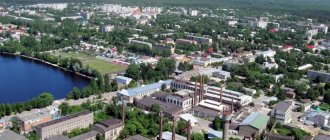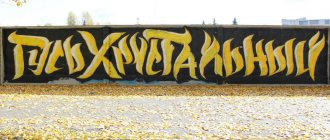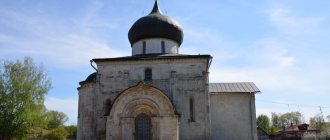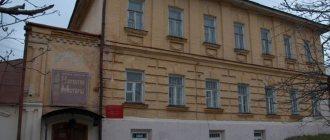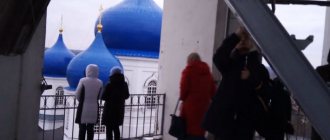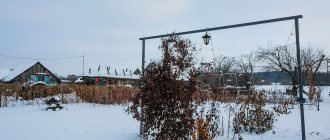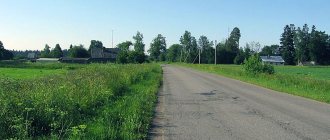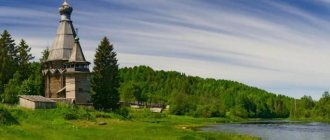Administrative subordination includes:
Cities:
- Kurlovo city
Settlements:
- Settlement Anopino
- Settlement Velikodvorsky
- Settlement Gavrino
- Settlement Herold
- Settlement Dobryatino
- Settlement Zeleny Dol
- Settlement Zolotkovo
- Settlement of Ivanishchi
- Settlement of Ilyichevo
- Settlement Komissarovka
- Settlement Krasnaya Zarya
- Settlement Red Echo
- Settlement Red October
- Settlement Malyukovsky
- Settlement Makhinsky
- Settlement Mezinovsky
- Settlement Nagorny
- Settlement Neverovsky
- Settlement Pervomaisky
- Settlement Tasinsky Bor
- Settlement Tasino
- Settlement Tasinsky
- Settlement Urshelsky
- Settlement Yakimets
- Settlement Neklyudovo
Villages:
- Abbakumovo village
- Aksenovo village
- Village Alexandrovka
- Village Alexandrovka
- Village Alferovo
- Village Andreevskaya
- Aristovo village
- Arsamaki village
- Village of Astakhovo
- Babino village
- Village Baranovo
- Badgers Village
- Beaver Village
- Village Bolshaya Artemovka
- Borzinka village
- Borzino village
- Borisovo village
- Borisovo village
- Village Budevichi
- Bottle Village
- Village Vasilevo
- Village Vasyunino
- Village Vashutino
- Village of Vyrytovo
- Village of Golovari
- Davydovo village
- Village Demidovo
- Village Demino
- Village Dmitrievo
- Village Dolbino
- Village Evsino
- Zary village
- Village Zhigalovo
- Village Zabolotye
- Village Zalesye
- Village Zanutrino
- Village Zakharovo
- Village Ivanovka
- Village Izbishchi
- Village Ikshevo
- Village Ilyino
- Village of Konstantinovo
- Village of Krasny Poselok
- Village Kuzmino
- Village Kupreevo
- Kurlovo village
- Village Lazarevka
- Village Larinskaya
- Village Lesnikovo
- Village Lobanovo
- Maklaki village
- Village Malaya Artemovka
- Malinki village
- Village Malyshkino
- Maslikha village
- Village Makhonino
- Miltsevo village
- Mitenino village
- Mihali village
- Mokroe village
- Village Mordvinovo
- Morugino village
- Village Narmoch
- Narmuch village
- Village Neklyudovo
- Village Nechaevskaya
- Village Nikulino
- Village Novoopokino
- Village Novo-Durovo
- Village of Novo-Maltsevo
- Village of Novo-Novlyanovo
- Village Novo-Pavlikovo
- Village Novo-Pokrovskoye
- Village Novouvarovka
- Village Obdikhovo
- Ovintsy village
- Okatovo village
- Orlovo village
- Village Ostashevo
- Island Village
- Village Pavlikovo
- Village Paevo
- Parakhino village
- Perovo village
- Village of Pershkovo
- Poboyki village
- Popovichi village
- Village Potapkovo
- Village Potapovskaya
- Pochinki village
- Village Prokshino
- Village Protasyevo
- Village Pshenitsino
- Village Rastovo
- Village of Ryazanovo
- Village Savikovo
- Village Savinskaya
- Village Semenovka
- Village Sivtsevo
- Village Skvortsovo
- Spudni village
- Village Starkovo
- Village Staroopokino
- Village Stepanovo
- Village Stepanovo
- Village Sulovo
- Village Talanovo
- Village Talnovo
- Village Timenka
- Village Tikhonovo
- Village Tolstikovo
- Village Trufanovo
- Village Trushkino
- Tyurvishchi village
- Ulyakhino village
- Usada Village
- Fedorovka village
- Fedotovo village
- Village Filatovo
- Village of Fomino
- Village Kharlamovo
- Chaslitsy village
- Village Chekovo
- Chisti village
- Chiur village
- Village Shabanovo
- Chevertny village
- Shestimirovo village
- Village Yagodino
- Village of Yazvitsy
- Dudor village
- Village Vasilevo
- Sintsovo village
- Village Lesnaya
- Village Nikolopolye
- Village Ilyichevka
- Village Red Anchor
- Oblepikha village
Passage:
- Zolotkovsky crossing
Villages:
- Velikodvorye village
- Village Veshki
- Village Georgievo
- Village Grigoryevo
- Village Gubtsevo
- Village Gus-Parakhino
- Village Dubasovo
- Village Zakolpie
- Village Kolp
- Village Kryukovo
- Village Narma
- Village Palishchi
- Village Tashilovo
- Village Tsikul
- Village Chersevo
- Erleks village
Gus-Khrustalny district is located 60 km south of Vladimir, in the southwestern part of the Vladimir region. The district borders in the north with the Sobinsky district, in the east with the Sudogodsky and Melenkovsky districts, in the south with the Ryazan region, and in the west with the Shatursky district of the Moscow region. The district contains 14 settlements, of which 1 is urban - the city of Kurlovo; in total there are 174 rural settlements in the district. The administrative center is the city of Gus-Khrustalny (not part of the district).
Gus-Khrustalny district is the largest in the Vladimir region. The area of the district is 4300 sq. km. The total population is 46.3 thousand people.
The Gus-Khrustalny district is often called Meshchera, the Meshchera region, after the name of the lowland that occupies the entire southwest of the region. The name comes from the settlers who came to this region of forests and swamps more than 2 thousand years ago. The tribes of the Finno-Ugric group, who called themselves “Meshchera”, left in these parts the names of rivers and settlements that were unusual for the Russian ear, reflecting the peculiarities of their ancient language, for example, Kolp, Narmoch, Koloksha, Buzha, Dandur...
Natural resources favorable for glassmaking have made it possible to engage in this craft in ancient times. The current glory of the Gusev glass factories began in the 18th century. This happened thanks to the merchants Akim and Foma Maltsov , who are rightfully considered one of the founders of the Russian glass industry.
The city of Gus-Khrustalny arose as a settlement at the crystal factory in 1756 and was called the “estate of the Gusev factory.” This is how it became part of the formed Vladimir province in 1778.
The Vladimir region itself, within which the region originated and was formed in 1708 as the Vladimir province within the Moscow province. In 1778, an independent Vladimir governorate was formed, divided into 14 districts. In 1796, the governorship was transformed into a province. From 1881 to 1917, the Vladimir province consisted of 13 districts and did not change its borders.
Since 1918, for almost 10 years, the administrative-territorial division of the Vladimir province changed several times. For some time, the territory of Gusevsky district, transformed into Gusevsky district, became part of the Ivanovo industrial region as part of the Vladimir district.
Gusevsky district with its center in the village of Gus-Khrustalny as part of the Vladimir province was finally formed on August 23, 1926. It included 7 volosts of Sudogodsky and Melenkovsky districts and Ryazan province. This date is considered the day of formation of the Gus-Khrustalny district .
Three quarters of the region's territory is occupied by coniferous and mixed forests. The predominant species are pine (52%), birch (30%), spruce, aspen, oak. Rowan, viburnum, and juniper are found in large quantities. The forests are famous for their reserves of berries and mushrooms.
The main rivers of the region are Kolp , Sudogda , as well as the Gus , Pol , Buzha , which are tributaries of the Oka River. All of them are tortuous, unnavigable, and flow through forests. There are many small rivers, as well as swamps with thickets of alder and aspen. Cranberries are abundant in the swamps. Large areas in the upper reaches and watersheds of rivers are occupied by peat bogs.
About 40% of all peat reserves in the region are concentrated in the region.
The forests and wetlands of the region form a mosaic of ecosystems and provide life for a large number of species of animals and birds, including rare ones: more than 30 species of animals, more than 10 species of plants and fungi are listed in the Red Book of the Vladimir Region and Russia. Some corners of the area have been declared natural monuments.
One of the most important railway routes Moscow - Kazan passes through the area.
the Meshchera National Park in the region .
Historical and cultural attractions of the area
Official website of the District Administration: www.gusr.ru
Map
| Gus-Khrustalny: maps |
Gus-Khrustalny: photo from space (Google Maps) Gus-Khrustalny: photo from space (Microsoft Virtual Earth)
| Gus-Khrustalny. Nearest cities. Distances in km. on the map (in brackets along roads) + direction. Using the hyperlink in the distance , you can get the route (information courtesy of the AutoTransInfo website) | |||
| 1 | Kurlovo | 18 (21) | YU |
| 2 | Sudogda | 39 (49) | WITH |
| 3 | Rainbow | 46 (86) | NW |
| 4 | Roshal | 48 (179) | Z |
| 5 | Tuma (Ryazan region) | 52 (61) | YU |
| 6 | Sobinka | 56 (98) | NW |
| 7 | Vladimir | 59 (68) | WITH |
| 8 | Spas-Klepiki | 61 (86) | SW |
| 9 | Lakinsk | 62 (94) | NW |
| 10 | Melenki | 69 (172) | SE |
| 11 | Stavrovo | 69 (95) | NW |
| 12 | Shatura | 70 (167) | Z |
| 13 | Kosteryovo | 73 (123) | NW |
| 14 | Red Gorbatka | 75 (134) | IN |
| 15 | Cockerels | 81 (130) | NW |
| 16 | Melekhovo | 83 (140) | NE |
| 17 | Kameshkovo | 84 (118) | WITH |
| 18 | Moore | 87 (142) | IN |
| 19 | Kasimov | 89 (123) | SE |
| 20 | Suzdal | 91 (105) | WITH |
| 21 | Kovrov | 92 (151) | NE |
| 22 | Doschatoe (Nizhny Novgorod region) | 94 () | IN |
| 23 | Volginsky | 95 (154) | NW |
| 24 | Cover | 97 (148) | Z |
| 25 | Navashino | 97 (158) | IN |
| 26 | Nikologory | 102 () | NE |
| 27 | Vyksa | 102 (184) | IN |
| 28 | Yegoryevsk | 105 (173) | Z |
| 29 | Orekhovo-Zuevo | 107 (170) | Z |
| 30 | Likino-Dulyovo | 107 (180) | Z |
a brief description of
Located in the eastern part of the Meshchera Lowland, on the river. Gus (tributary of the Oka), 63 km south of Vladimir. Railway station.
Territory (sq. km): 42
Information about the city of Gus-Khrustalny on the Russian Wikipedia site
Historical sketch
An ancient center of the glass industry; in 1756 a crystal factory was built, founded by the merchant Akim Maltsov. From the middle of the 19th century. The textile industry developed.
For more than a century and a half, the village was called the Gusevskaya Crystal Factory or Gus-Maltsevsky after the surname of the factory owners, less often - the village of Gus.
In the materials of the 1897 population census for the Melenkovsky district of the Vladimir province, in the settlement of the Gusevskaya paper-spinning factory of the Chamberlain of the Highest Court of Nechaev-Maltsev, there were 11,981 inhabitants. In the statistical directory “Cities of the Vladimir Province in Figures”, published in Vladimir in 1924, it is listed as the city of Gus-Khrustalny.
In 1926, with the formation of Gusevsky district, its center received the name: the working village of Gus-Khrustalny. The significant part of the name is given by its location on the river. Goose (left tributary of the Oka). Now this is a completely Russian name, which, together with the name of the main tributary of the Gusya River. The stick even forms a certain thematic ensemble - both are named after waterfowl. However, it is possible that they arose as a result of tracing or reinterpretation of pre-Russian names.
Workers' settlement since December 6, 1927. City since 1931.
Since the early 1960s. a technology for industrial melting of lead crystal was developed and introduced, and new types of crystal products were created.
Municipal indicators
| Index | 2001 |
| Demography | |
| Number of births, per 1000 population | 9 |
| Number of deaths, per 1000 population | 20.7 |
| Natural increase (decrease), per 1000 population | -11.7 |
| Standard of living of the population and social sphere | |
| Average monthly nominal accrued wages, rub. | 2439 |
| Average housing area per inhabitant (at the end of the year), sq.m. | 19.2 |
| Number of preschool institutions, pcs. | 29 |
| Number of children in preschool institutions, thousand people | 3.1 |
| Number of daytime educational institutions (at the beginning of the school year), pcs. | 18 |
| Number of students in daytime educational institutions, thousand people | 9.3 |
| Number of doctors, people. | 244 |
| Number of nursing staff, people. | 677 |
| Number of hospital institutions, pcs. | 5 |
| Number of hospital beds, thousand units | 0.8 |
| Number of medical outpatient clinics, pcs. | 8 |
| Capacity of medical outpatient clinics, visits per shift, thousand units. | 2.7 |
| Economy, industry | |
| Number of enterprises and organizations (at the end of the year), pcs. | 815 |
| Construction | |
| Volume of work performed by type of activity “Construction” (until 2004 - volume of work performed under construction contracts), million rubles. | 88.6 |
| Commissioning of residential buildings, thousand sq.m. of total area | 12.3 |
| Commissioning of residential buildings, apartments | 168 |
| Commissioning of preschool institutions, places | 0 |
| Commissioning of educational institutions, places | 0 |
| Commissioning of hospital facilities, beds | 0 |
| Commissioning of outpatient clinics, visits per shift | 0 |
| Transport | |
| Number of bus routes (in intracity traffic), pcs. | 1 |
| Number of passengers transported by buses per year (in intracity traffic), million people. | 3.1 |
| Connection | |
| Number of residential telephone sets of the city public telephone network, thousand units. | 12 |
| Trade and services to the population | |
| Retail trade turnover (in actual prices), million rubles. | 842.3 |
| Retail trade turnover (in actual prices), per capita, rub. | 11039 |
| Public catering turnover (in actual prices), million rubles. | 9.1 |
| Volume of paid services to the population (in actual prices), million rubles. | 163.4 |
| Volume of paid services to the population (in actual prices), per capita, rub. | 2141.3 |
| Volume of household services to the population (in actual prices), million rubles. | 7.7 |
| Volume of household services to the population (in actual prices), per capita, rub. | 101.2 |
| Investments | |
| Investments in fixed assets (in actual prices), million rubles. | 367.1 |
| Share of investments in fixed assets financed from budgetary funds in the total volume of investments, % | 3.5 |
Data sources:
- Regions of Russia. Main characteristics of the constituent entities of the Russian Federation: statistical collection. Goskomstat of Russia. - M:, 2003.
Culture, science, education
Museums: local history and crystal.
Universities of the city
Vladimir State University (Gus-Khrustalny branch)
601508, Vladimir region, Gus-Khrustalny, 50th Anniversary of Soviet Power Ave., 39
Museums, galleries, exhibition halls
State Vladimir-Suzdal Historical, Architectural and Art Museum-Reserve 600000, Vladimir, st.
Bolshaya Moskovskaya, 43 Phone(s) order excursions Website: https://www.vladmuseum.ru/ Gus-Khrustalny Historical and Art Museum 601501, Vladimir region, Gus-Khrustalny, st. Kalinina, 2 Phone(s): (49241) 3-05-39
Crystal Museum named after. Maltsov 601550, Vladimir region, Gus-Khrustalny, st. Kalinina, 2-a
Architecture, sights
St. George's Cathedral (1892-1903), Church of St. Akim and Anna (1816). Shopping arcades, etc.
| Population by year (thousands of inhabitants) | |||||||
| 1897 | 12.0 | 1976 | 69 | 2003 | 67.1 | 2015 | 56.7 |
| 1923 | 12.2 | 1979 | 71.6 | 2005 | 64.9 | 2016 | 56.0 |
| 1926 | 17.9 | 1982 | 73 | 2006 | 63.8 | 2017 | 55.4 |
| 1931 | 25.5 | 1986 | 75 | 2007 | 62.7 | 2018 | 54.5 |
| 1939 | 40.2 | 1989 | 76.4 | 2008 | 61.9 | 2019 | 53.6 |
| 1959 | 54.2 | 1992 | 76.9 | 2010 | 60.2 | 2020 | 52.8 |
| 1962 | 59 | 1996 | 75.9 | 2011 | 60.8 | 2021 | 52.0 |
| 1967 | 63 | 1998 | 74.8 | 2012 | 59.7 | ||
| 1970 | 64.5 | 2000 | 73.4 | 2013 | 58.6 | ||
| 1973 | 67 | 2001 | 72.3 | 2014 | 57.6 | ||
Gus-Khrustalny
Gus-Khrustalny (until 1926 - Gus-Maltsovsky) is the regional center of the Vladimir region with a population of 55,421 people (2017). Located in the forest region of Meshcheran on the Gus River, 63 km south of Vladimir. The city of Gus-Khrustalny is the oldest center of the glass industry in Russia, which determines its unusual name.
Story
However, the Meshchera land was not the birthplace of Russian glassmaking. In 1723, by decree of Peter I, merchants S. Aksenov and N. Druzhinin were allowed to open a glass and crystal factory in Mozhaisk district, and in 1724 - to take merchant Vasily Maltsov as a “company”. After the death of his companions, in 1730, Vasily Maltsov became the sole owner of the crystal factory in Mozhaisk district, and then transferred ownership to his sons - Akim and Alexander. In the 1740s, the Mozhaisk factory became famous throughout Russia. In 1747, the Senate adopted a decree banning the operation of glass and metallurgical factories in Moscow and the Moscow region in order to protect the forest from destruction. The Maltsov brothers decided to split production. In 1750, Alexander moved his part of the crystal factory from near Moscow to the Oryol province. Akim Maltsov in 1756 began the construction of a new factory near the village of Nikulino, Vladimir province on the Gus River, taking more than 150 artisans from Mozhaisk. The location was well chosen: an abundance of raw materials (quartz sand, dolomite) and forests, proximity to convenient waterways and shopping centers - Moscow and Nizhny Novgorod.
This was the beginning of the city of Gus-Khrustalny. For more than a century and a half, crystal production on the Vladimir land belonged to the merchant-noble family of the Maltsovs. Already by the end of the 18th century. About one and a half dozen glass factories operated here. Crystal production constantly introduced advanced technologies that enriched the artistic image of crystal. In the 19th century The Maltsov crystal factory had already fulfilled large orders from the imperial court and was awarded the highest awards at all-Russian and world exhibitions.
Along with production, the village of Gus-Maltsovsky itself developed. In 1816 S.A. Maltsov built a stone temple of Joachim and Anna for the workers, which already under I.S. Maltsov was expanded in 1850 with a warm refectory by the Trinity Church. A progressive entrepreneur, I.S. Maltsov is building one of the first workers’ settlements in Russia with good-quality houses for two families (the total number of “Maltsov houses” by the beginning of the 20th century was 427) and three-story barracks for factory workers.
Initially, the village was located in a bend of the Gus River. The river was blocked with a dam, and an artificial lake was formed, which still gives Gus-Khrustalny an unusual flavor, dividing the village into two parts. The appearance of the older southern half was determined by a crystal factory, a paper spinning and weaving factory, a workers' hospital, a pharmacy, a school for children of artisans, a factory store - shopping arcades with 20 branches with columns, galleries and balconies. On the southern outskirts of the village, the chapel of St. Barbara from the 1880s has survived.
The center of the northern part of the village at the end of the 19th century. became a church-architectural ensemble with the most beautiful St. George's Cathedral, built at the expense of Yu.S. Nechaev-Maltsov by architect L.N. Benois in the Old Russian style. The interior of the temple was decorated with paintings and mosaics by the famous V.M. Vasnetsova. Currently, the building of St. George's Cathedral houses the Crystal Museum named after. Maltsov. The architectural ensemble of the St. George Church was complemented by a stylistically similar almshouse building, built in 1897 according to the design of L.N. Benois, and two buildings of a men's primary school (designed by the architect V.A. Pokrovsky, Benois' assistant), one of which currently houses the Gus-Crystal Historical and Art Museum.
After the revolution in 1918, the Maltsov crystal factory was nationalized. In Soviet times, the plant's products were repeatedly presented at prestigious international exhibitions and received well-deserved awards.
In 1926, the village of Gus-Maltsovsky was renamed Gus-Khrustalny and became a district, and since 1929, a regional center of the Vladimir district of the Ivanovo Industrial Region. In 1931, the working village of Gus-Khrustalny was transformed into a city. In 1944, Gus-Khrustalny became part of the newly formed Vladimir region.
Economy
The city of Gus-Khrustalny was awarded the Order of the Badge of Honor (1981) for success in the development of the domestic glass industry and contribution to the development of the national economy. The specialization of glass and crystal production was preserved and developed in the city not only in the Soviet, but also in the post-Soviet period, despite the serious economic difficulties of the 1990s. After a three-year period of production suspension, at the end of 2014, the workshop of the Gusevsky Crystal Factory, producing colored crystal, resumed work. Today the plant is a leader on the Russian market in the production of highly artistic crystal products. Excursions are held at the Gusevsky Crystal Factory, where visitors are told about the history of production, the craft of glass blowers, and are also shown glass manufacturing technologies and amazing exhibits - masterpieces of crystal creation.
Many of the city's industries have today modernized in various areas of the glass industry: it is one of the world's largest producers of artificial quartz crystals; Gusevsky Glass Factory named after. F.E. Dzerzhinsky is one of the leading manufacturers of technical glass in Russia; The experienced glass factory has a large range of glassware produced; is engaged in the production and sale of glass containers, etc. Glassmaking is also developing in the Gus-Khrustalny district: - a multi-industry enterprise producing sheet, tinted, instrument, automobile and other glass; is a leading manufacturer of glass containers in Russia.
In 1992, Magistral LTD LLC was founded in Gus-Khrustalny, which today has become the largest plant in Russia for the production of protective glazing for automobile and water transport. The plant supplies armored glass for the needs of the Russian Ministry of Defense, for cash-in-transit vehicles and luxury cars. In particular, the plant produced armored glass for the presidential limousine from the “Cortege” project, which was used during the inauguration of V.V. Putin May 7, 2022
In 2002, Gusevsky Valve Factory was founded in Gus-Khrustalny, specializing in the development and production of pipeline fittings for the oil and gas industry. The main consumers of its products are oil and gas companies, Surgutneftegaz, Gazprom, Lukoil. “Gussar” has become one of the leading enterprises in the Vladimir region and the base in Gus-Khrustalny. In February 2022, a foundry was opened as part of Gusar, essentially an entire plant for casting shut-off and control valves from steel, including those designed for operation in Arctic conditions. In terms of casting quality, this is one of the most modern production facilities in Russia.
Famous people
Many famous people in Russia were born and worked in Gus-Khrustalny: S.S. Korsakov (1854-1900), outstanding Russian psychiatrist; R.I. Soloukhin (1930-1988), an outstanding Soviet scientist in the field of mechanics and physics; V.V. Shilov (1964), People's Artist of the Russian Federation, master of portraiture, member of the Russian Academy of Arts; A.A. Reztsova (1964), two-time Olympic champion in biathlon, Olympic champion in cross-country skiing, the only woman in the world to be an Olympic champion in two winter sports, etc.
In August 1956, A.I., who returned from exile in Kazakhstan to Russia, settled in the village of Miltsevo in the Gus-Khrustalny district (now the village is part of the Mezinovsky Municipal Municipality). Solzhenitsyn. For about a year he “taught”, taught mathematics and electrical engineering (physics) in grades 8-10 at Mezinovskaya Secondary School. Solzhenitsyn’s life in Miltsevo was reflected in the story “Matryonin’s Dvor.” In 2013, in the village of Mezinovsky, the house where the writer lived, Matryonin Dvor, was recreated, and the Mezinovsky secondary school was named after A.I. Solzhenitsyn, a bust of the writer was unveiled near the school. Currently, a museum complex “Solzhenitsyn’s Routes” is being created here.
Natural objects
The city of Gus-Khrustalny is the organizing center of Vladimir Meshchera, a special natural and cultural territorial complex located in the southwest of the Vladimir region.
Author: V. Korolkova
